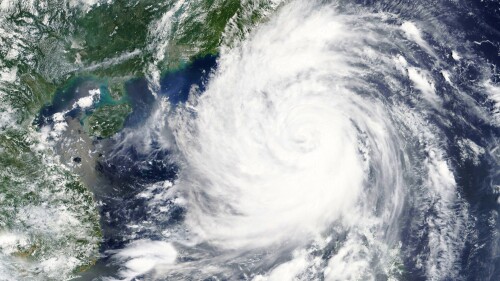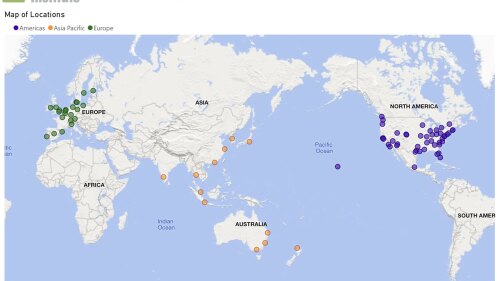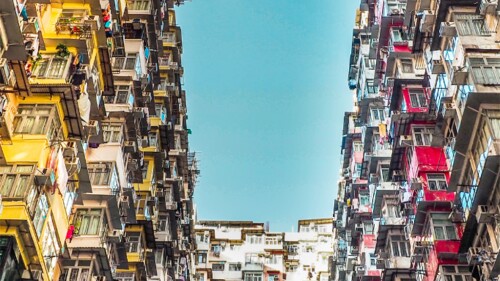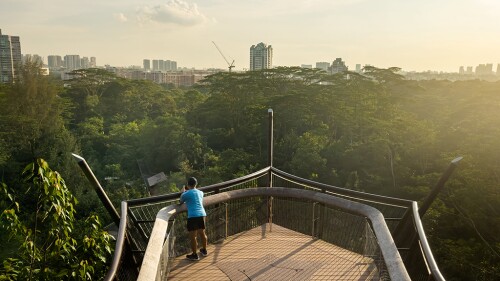Asia Pacific
Insights, trends, and innovation shaping real estate and urban development across the Asia Pacific region’s dynamic markets and cities.
Holiday travelers may notice that airport-connected hotels are incorporating more regional touches, from façade to dining. Here are five examples that offer the ultimate luxury, a short walk from guest room to terminal.
The 2026 Emerging Trends in Real Estate® Asia Pacific report, published jointly by ULI and PwC found a mood of cautious optimism among real estate professionals; however, respondents described considerable disparities in markets and sectors across the region. Tokyo was ranked as the top city for investment in the Emerging Trends survey, top of the table for the third consecutive year, followed by Singapore, Sydney, Osaka, and Seoul.
Across the Brisbane River from Brisbane, Australia’s central business district, the 33-story Upper House residential tower stands out in the city’s skyline with its “dancing balconies” and curving timber ribbons inspired by the prominent roots of Queensland’s native Moreton Bay fig tree.
In September 2023, Hong Kong was hit by its heaviest rainfall on record—nearly 6.3 inches (160 mm) in a single hour. Link Asset Management’s Temple Mall North, like many other buildings, suffered severe flood damage. In response, the company invested in detachable flood barriers and Internet-of-Things (IoT) sensors to mitigate future risk. For Link’s bottom line, this resilience investment translated into an 11.7 percent reduction in insurance premiums.
Despite geopolitical headwinds, green building regulations continue to gain momentum among local authorities. Many cities have moved beyond reporting requirements to demand practical, asset-level action. Numerous jurisdictions have introduced requirements on net-zero carbon and energy efficiency in buildings, fossil fuel-free heating, embodied carbon, electric vehicle (EV) charging facilities, and climate adaptation measures.
A seminar organized by the ULI Singapore NEXT Committee presented attendees with the little-known concept of real estate “tokenization,” or fractional investing/trading, as a potential bridge between private investors and direct ownership. Although not new, tokenization in real estate is a niche market, particularly in Asia Pacific, with Singapore hosting a small number of the specialized digital platforms.
ULI Asia Pacific has released its 2025 Asia Pacific Home Attainability Index, revealing persistent challenges to affordable or accessible housing across the region. The fourth edition of the report assesses 51 market segments across 41 major cities.
The closing panel at the 2025 ULI Asia Pacific Summit brought together real estate players from a wide range of geographies and capital markets roles. Audience polling at the start of the discussion revealed that Summit attendees believe the world will become more multipolar after a generation of American exceptionalism, with some audience members feeling that the U.S. will fall behind Asia or Europe.
Setting the tone for this year’s ULI Asia Pacific Summit, moderator Lola Woetzel, senior partner emerita at McKinsey & Company, presented a panel of industry leaders with the perennial question: “How does it feel to live here?” The discussion brought into sharp focus the complex realities shaping housing across the region.
Once the site of an abandoned quarry, Singapore’s Rifle Range Nature Park now serves as a buffer zone protecting one of the island nation’s last primary rainforests, Bukit Timah Nature Reserve, from encroaching development and human activity. Located to the reserve’s south, Rifle Range is Singapore’s first net-positive energy nature park, harvesting more energy than its annual operational requirements.
Singapore
Fourteen developments from across Asia have been named winners of the 2025 ULI Asia Pacific Awards for Excellence, one of the real estate industry’s most prestigious honors. Announced at the 2025 ULI Asia Pacific Summit held in May in Hong Kong, this year’s award winners include projects in Australia, Bangladesh, China, India, Japan, the Philippines, and Singapore.
One of Singapore’s most vibrant districts demonstrates how public/private partnerships and the community can shape the built environment.
Governments, businesses, and communities need to collaborate to reduce carbon emissions to ensure that decarbonisation is not just a buzzword.
Hong Kong
At the 2025 ULI Asia Pacific Summit—May 26–29, in Hong Kong—a panel of Asian economic and geopolitical experts addressed one of today’s most immediate global concerns: the implications of U.S.–China economic decoupling and the broader geopolitical shifts reshaping global trade and investment.
The creation of public space from unused, underused, or unequally shared linear spaces in urban areas has been happening for a long time. Major reference points in the architectural and planning worlds are Boston’s Emerald Necklace, designed by Frederick Law Olmsted (1878–1896); Freeway Park in Seattle (1972-1976); the Baltimore Inner Harbor (1963–1983); the Promenade Plantée in Paris (1987-1994); and the High Line in New York (2005–2019).
Although market dynamics are changing in countries across Asia, new opportunities are opening up in real estate investment
















